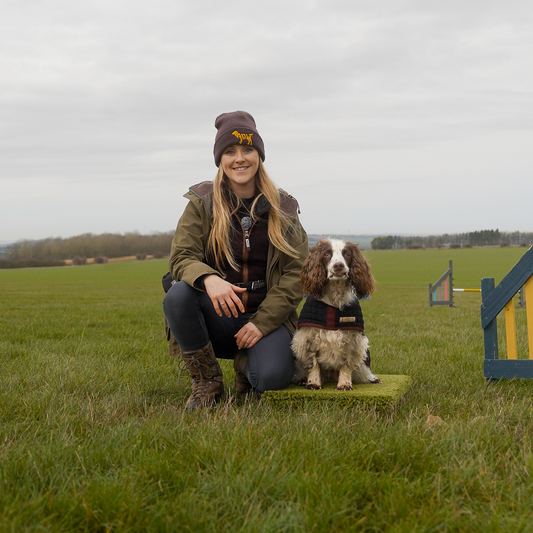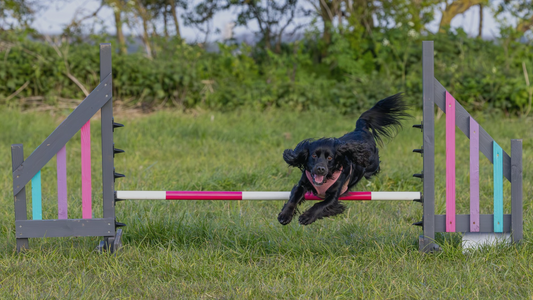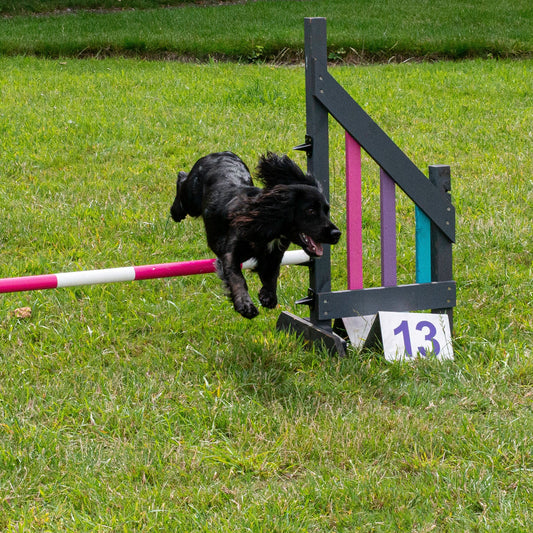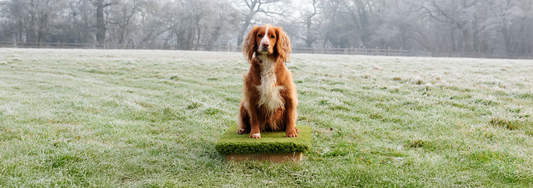Want to train your protection dog to ‘bark and hold’
But as soon as they see the bite sleeve, they’re too aroused to exert self-control
And break their wait?
Here is how to use a position box to break the 'Bark and Hold' behaviour into manageable training steps to achieve a dog that will hold their position until you give them their release cue.
And NO, you don’t need any aversives such as a yank on a prong collar or a “‘stimulation from the remote dog training collar”.
Modern science-backed dog training has proven the dangerous downside of the outdated application of punishment, coercion, and negative reinforcement such as fallout and other secondary behaviours immediately or down the line.
Training methodology
If you’ve read our eBook you may remember from the E-Extend Module that in Dog Training we use a principle called ‘The 3-Ds’? Standing for Duration, Distance and Distraction to design the stages of a programme.
Here are how ‘The 3-Ds’ would apply to training a bite dog to hold position in the presence of a distraction (sleeve):
- Duration: how long your dog waits before being released.
- Distance: How close the sleeve is to your dog.
- Distraction: how tempting the movement of the sleeve is.
Now, imagine you jump straight in and kick off a training session with your decoy/helper wearing a sleeve charging in shouting and gesturing.
What would your dog’s chance of holding position be out of 10?
The difficulty level has ramped up really quickly and is challenging many elements of your dog’s bark and hold behaviour at once.
The danger of this approach would be one incorrect rehearsal can confuse your dog, decrease motivation, and slow progress.
So, to strengthen your bark and hold behaviour against distraction, how could you improve their chance of success?
Answer: take smaller steps
The power of breaking the exercise down into smaller steps is it will make it achievable and easier for your dog to understand what you want them to do and keep them more motivated to keep training as you will see progress quicker.
This can be achieved by challenging one element of ‘The 3-Ds’ at a time.
You will keep the level of difficulty the same with the proximity of the helper at 5 paces, and progressively ramp up the temptation level of the decoy/helper wearing the sleeve.
How to train Bark and Hold | Here’s the drill:
Setup:
Handler: guide your dog into the position box
The Position box is a powerful training tool because it clearly establishes boundary control i.e. where you want to them to stay.
Buy yours by clicking HERE
Helper/decoy: stand 5 paces away from the box with the sleeve behind your back
Belgian Malinois in a Position Box by Anglian Dog Works
Rep One:
Helper: Wait until the dog barks*, then move to produce the sleeve, then put it out of sight again
*Teaching the dog they must bark continuously to gain access to the decoy/helper
Handler: reward the dog for holding position by using food or a tug to redirect their attention onto you.
If the dog gets out of the box, no reward from handler, and helper keep the sleeve away so the dog doesn’t self-reward. Handler, you may need to hold a long line with enough slack for the dog to only range 3 paces away. This loose hold will mimic freedom and encourage the dog to self-regulate but prevent them self rewarding with a bite without waiting first.
Rep Two:
Helper: wait for the bark, move the sleeve.
Handler: release the dog onto the sleeve as a reward.
If it were an item the dog never got access to, they would learn to ignore it; rewarding them with the bite is important for it to remain something the dog is driven to gain access to.
Repeat the two steps in rep 1 & 2 above moving the sleeve more each time you have success and going back to a simpler rep if your dog breaks their hold.
Here’s what ramping it up or down might look like for your dog:

To get your dog a Position Box professionally made by Anglian Dog Works, click the image above to be taken to the page where they are for sale.
Please share your questions and progress:
We would love to see how you get on with your dog’s Bark & Hold training. For tips from me and to share success post your pictures and videos in the Anglian Dog Works Facebook group. https://www.facebook.com/angliandogworks
About the author:
Hi 👋 I’m Emma, accredited as a professional dog trainer by the Institute of Modern Dog Trainers (IMDT). I help owners of energetic dogs achieve the dog-owning life they envisioned by providing robust obedience & agility training for dogs in Balsham and Barton, near Cambridge.
Disclaimer: The content of this article does not include personalised advice and is for information purposes only. If you need individual advice or other enquiries please click here to get in contact or if you're not local to Anglian Dog Works, you can find a trainer in your area by going to the IMDT website: https://www.imdt.uk.com/find-a-qualified-imdt-trainer









